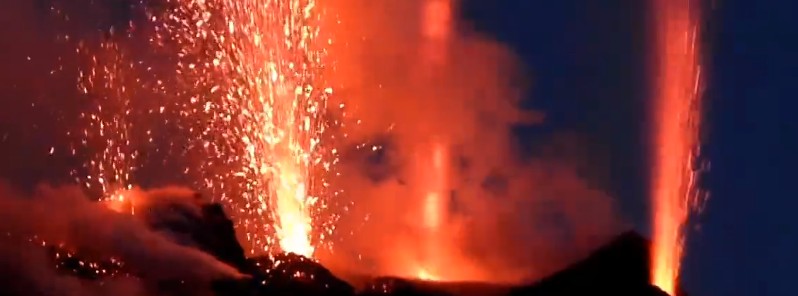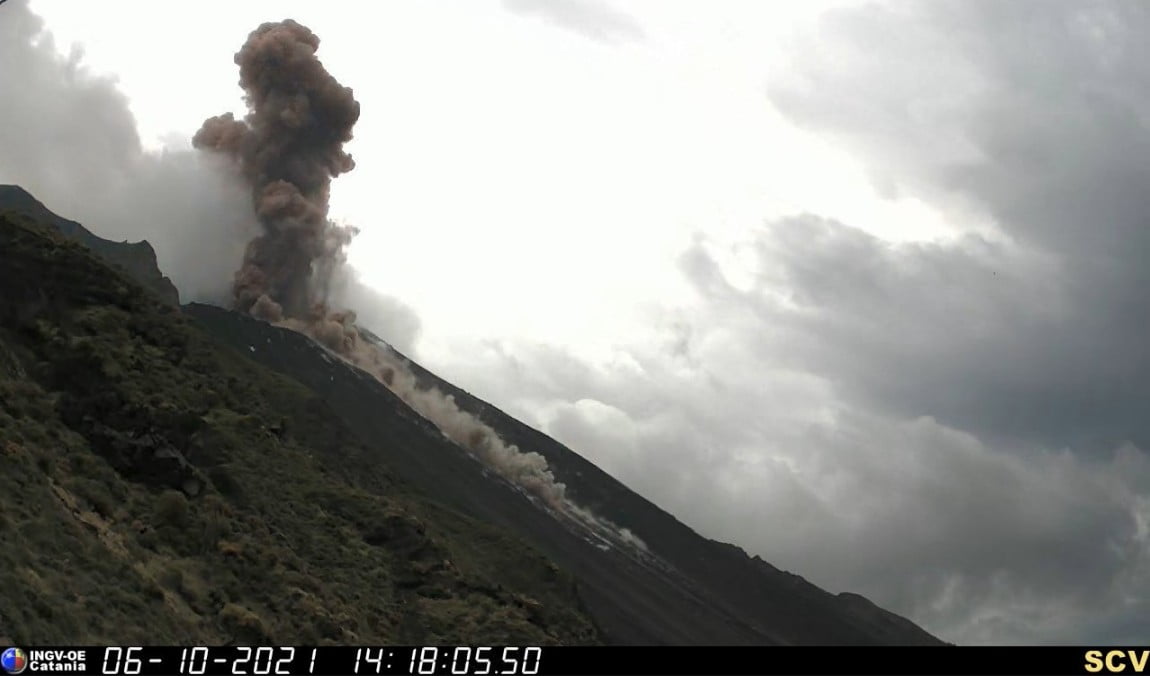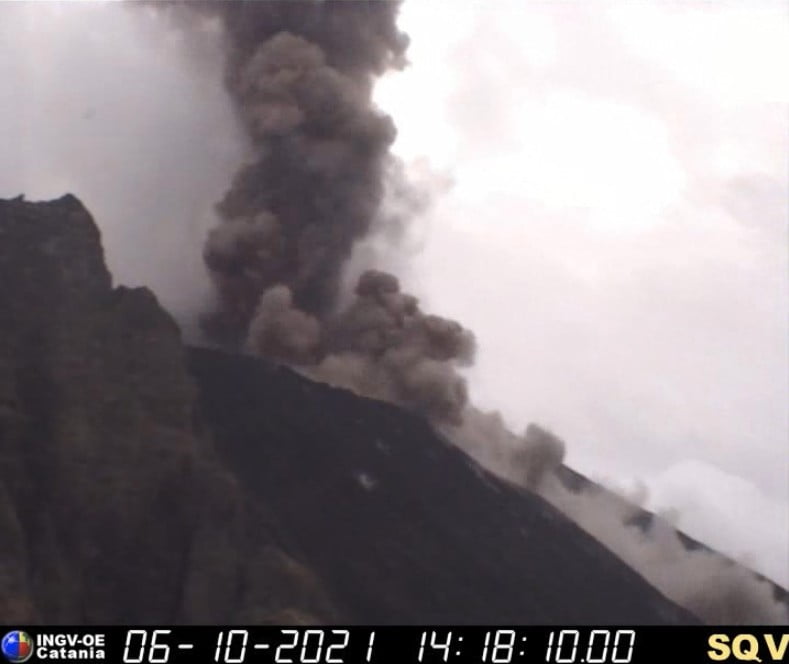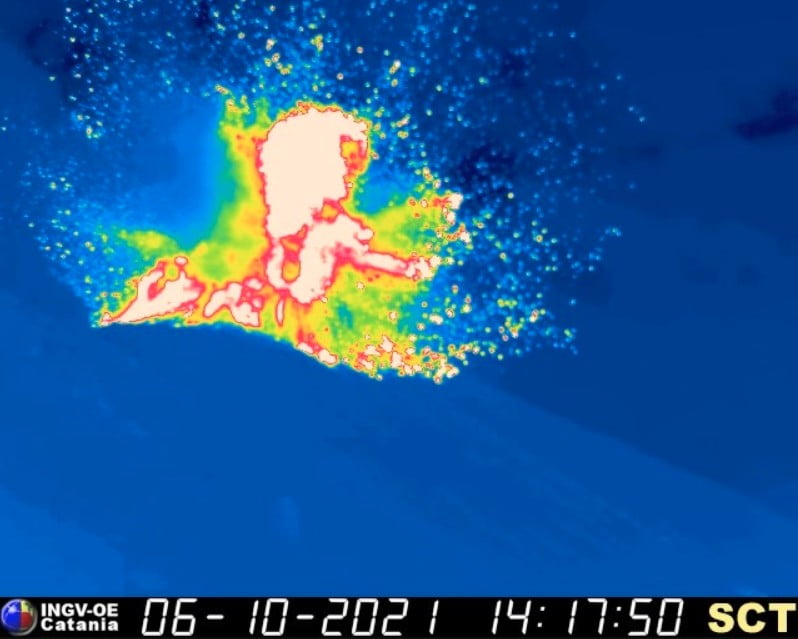Intense explosions from four vents at Stromboli volcano, Italy

Almost simulataneous explosions were recorded from four vents at Stromboli volcano, Italy late Friday, March 4, 2022.
Thanks to Boris Behncke of INGV we have this amazing video of the eruption:
Beautiful simultaneous (or almost so) explosions from four vents at #Stromboli volcano, nightfall on 4 March 2022 pic.twitter.com/wVAve7blJ8
— Boris Behncke (@etnaboris) March 4, 2022
From February 21 to 27, activity at Stromboli was characterized by ongoing explosions from three vents in Area N (North Crater area) and three vents in Area C-S (South-Central Crater area).1
Explosions from Area N vents (N1 and N2) averaged 2 – 5 events per hour; explosions from the N1 vent ejected lapilli and bombs 80 – 150 m (262 – 492 feet) high and those at two N2 vents ejected material less than 80 m high.
Low-intensity explosions at the two S2 vents occurred at a rate of 4 – 9 per hour and ejected coarse material no higher than 80 m.
While N2 produced weak and occasional spattering, no explosions occurred at the S1 and C vents in Area C-S.
A major explosion took place at the volcano at 14:17 UTC on October 6, 2021.2
The explosion ejected a significant amount of coarse pyroclastic material that surpassed the crater terrace, affecting the area of Pizzo Sopra la Fossa and Sciara del Fuoco, and rolling all the way to the coastline.





Images courtesy: INGV-OE
Geological summary
Spectacular incandescent nighttime explosions at this volcano have long attracted visitors to the “Lighthouse of the Mediterranean.”
Stromboli, the NE-most of the Aeolian Islands, has lent its name to the frequent mild explosive activity that has characterized its eruptions throughout much of historical time.
The small, 924-m-high (3 031 feet) island is the emergent summit of a volcano that grew in two main eruptive cycles, the last of which formed the western portion of the island.
The Neostromboli eruptive period from about 13 000 to 5 000 years ago was followed by formation of the modern Stromboli edifice. The active summit vents are located at the head of the Sciara del Fuoco, a prominent horseshoe-shaped scarp formed about 5 000 years ago as a result of the most recent of a series of slope failures that extend to below sea level.
The modern volcano has been constructed within this scarp, which funnels pyroclastic ejecta and lava flows to the NW. Essentially continuous mild strombolian explosions, sometimes accompanied by lava flows, have been recorded for more than a millennium.3
References:
1 Global Volcanism Program, 2022. Report on Stromboli (Italy). In: Sennert, S K (ed.), Weekly Volcanic Activity Report, 23 February-1 March 2022. Smithsonian Institution and US Geological Survey.
2 Major explosion at Stromboli volcano, significant amount of pyroclastic material, Italy – The Watchers
3 Stromboli – Geological summary – GVP
Featured image credit: Boris Behncke/INGV

Commenting rules and guidelines
We value the thoughts and opinions of our readers and welcome healthy discussions on our website. In order to maintain a respectful and positive community, we ask that all commenters follow these rules:
We reserve the right to remove any comments that violate these rules. By commenting on our website, you agree to abide by these guidelines. Thank you for helping to create a positive and welcoming environment for all.